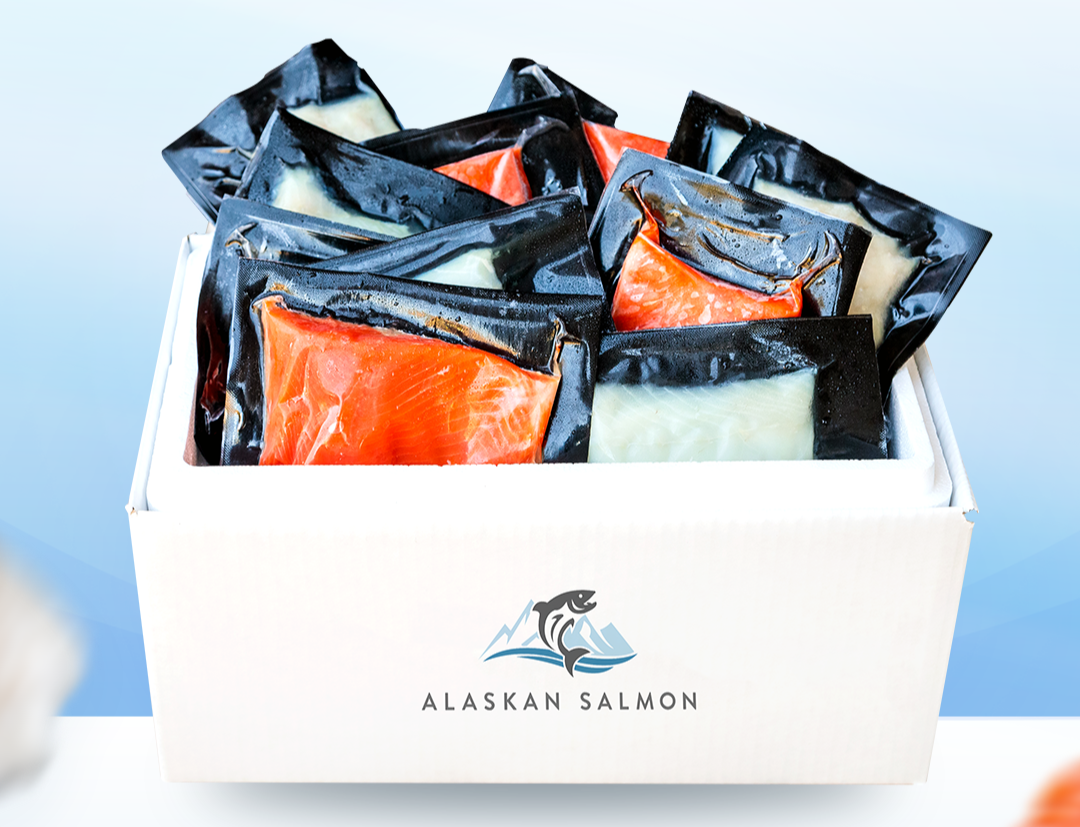Don’t Have Tilapia? Try These 7 Tilapia Substitutes That Taste Just as Good
Updated on Jul 04, 2025
Tilapia has become a kitchen staple for a reason. It’s affordable, cooks quickly, and pairs well with almost anything. I’ve used it in everything from fish tacos to baked fillets, and it’s always been a reliable go-to in my kitchen.
Still, there are times when it’s out of stock or just not the best option. Maybe you're looking for something more sustainable, or you need a fish with a similar flavor and texture for a specific recipe.
In this guide, I’ll walk you through seven tilapia substitutes I’ve personally cooked with. Each one is easy to prepare, tastes great, and works well across a variety of dishes.
What Makes a Good Tilapia Substitute?
I cook with tilapia a lot — it’s one of those fish that just does what you need it to do. It’s mild, cooks fast, and takes on whatever flavor you throw at it. So when I need a backup, I’m looking for a fish that checks those same boxes.
Here’s what I always look for when swapping out tilapia:
Mild flavor profile
Tilapia doesn’t try to steal the spotlight — it’s mellow, clean, and goes with anything. That’s what makes it so popular. So if I’m trying a different fish, I want that same low-key vibe that lets the seasonings shine, not a bold or “fishy” taste.
White, flaky texture
There’s nothing worse than biting into a fish that’s tough or chewy when you expect something tender. Tilapia’s flakes are light and delicate, and that’s what I try to match when I’m choosing a substitute. Bonus points if it practically falls apart with a fork.
Versatility in cooking
Whether I’m throwing it in a taco, baking it with lemon and herbs, or tossing it into a stew, tilapia can do it all. A good substitute should be just as easy to work with—no weird surprises, and definitely no breaking apart on the grill.
Related: Tilapia vs. Salmon
7 Tilapia Substitutes That Taste Just as Good
I’ve had moments where tilapia just wasn’t in the cards — whether it was sold out, not looking fresh, or I simply wanted to shake things up. Over time, I’ve found a few white fish that work just as well in my go-to recipes. Some of them even made me forget I was looking for tilapia in the first place.
Here are seven of my favorite substitutes that bring the same mild flavor, flaky texture, and versatility to the table:
1. Cod (Sable Fish)
Cod is probably the easiest and most reliable swap for tilapia. It has a similar mild flavor that doesn’t overpower sauces or spices, and its texture is soft and flaky—very close to what you’d expect from tilapia. That’s why it works so well in a wide range of dishes.
It’s also incredibly versatile. I’ve baked it, pan-fried it, and even added it to fish stews, and it always holds up. Because it’s a bit thicker than tilapia, cod does especially well in recipes where the fish needs to hold its shape, like in tacos, casseroles, or chowders.
Related: Best Froze Cod to Buy
2. Halibut
Halibut is a great alternative if you’re looking for something a little firmer than tilapia, but still mild in flavor. It has a clean, slightly sweet taste and a dense, meaty texture that makes it feel a bit more substantial on the plate. I like using it when I want something that holds together well but still blends into a dish without stealing the show.
Because of its firm texture, halibut is perfect for grilling or pan-searing. It’s less likely to fall apart compared to tilapia, which makes it a solid choice for fish sandwiches, skewers, or even a hearty fish taco.
Related: Best Frozen Halibut to Buy
3. Flounder
If you’re after something extra delicate and light, flounder is a fantastic substitute for tilapia. It has a super mild flavor, almost buttery, and a finer, more tender flake than most white fish. I reach for flounder when I want something that basically melts in your mouth, especially in more subtle dishes.
Because it’s so thin and delicate, flounder is best when baked or sautéed gently. It cooks quickly and doesn’t need much fuss. Just a bit of lemon, butter, or herbs goes a long way. It’s ideal for light dinners or recipes where you want the fish to feel soft and elegant.
Related: Halibut vs. Flounder
4. Sole
Sole is another light and mild fish that makes a great stand-in for tilapia, especially if you’re going for something delicate. It has a soft, clean taste that doesn’t overpower the dish, and the texture is super tender. I’d say it’s one of the more refined options if you’re cooking something elegant or a bit more upscale.
It shines best when it’s pan-fried or lightly baked. I like to cook sole with simple ingredients, maybe just a splash of lemon and a sprinkle of parsley, so the flavor stays clean and fresh. It's perfect for quick dinners or when you want something light but satisfying.
5. Haddock
Haddock has a slightly stronger flavor than tilapia, but still stays within that mild, easy-to-love range. It’s flaky, white, and tender, which makes it a solid option if you want something with a bit more personality without going too bold. I like using it when I want a fish that can hold its own in a dish but still keep things balanced.
It’s great for baking or frying, and it’s especially good in recipes like fish and chips or hearty casseroles. Haddock also does well when seasoned simply with herbs and lemon. If you're looking for a tilapia swap that adds just a little more depth, this is a good one to try.
Related: Haddock vs. Halibut
6. Snapper
Snapper has a slightly bolder flavor than tilapia, but still stays clean and balanced. It’s a great option if you want something that feels a little more elevated but still plays well with a variety of seasonings. The texture is firm yet flaky, which makes it really versatile in the kitchen.
I like using snapper in dishes that have strong herbs or spices, like fish stew or roasted fillets with Mediterranean flavors. It holds up well to bold marinades and still cooks evenly without falling apart. If you want to level up your dinner while keeping it simple, snapper is a solid choice.
7. Pollock
Pollock is one of the more budget-friendly substitutes for tilapia, but don’t let the price fool you. It has a light, mild flavor and a soft, flaky texture that works really well in most everyday recipes. I like using it when I need something quick, reliable, and affordable.
It’s especially great for frying, so I often use pollock in fish sticks or sandwiches. It also works well in tacos or baked dishes where you’re adding a sauce or crust. If you’re looking for a tilapia swap that won’t break the bank but still tastes great, pollock is worth keeping in your freezer.
Tips for Cooking Tilapia Substitutes
Once you’ve picked your substitute, cooking it right makes all the difference. Each fish has its own texture and thickness, so small tweaks can help bring out the best in each one. Here are a few tips I always keep in mind:
Match texture and flavor to the cooking method
Thicker fish like halibut or cod are great for grilling or pan-searing. More delicate fish like flounder or sole are better baked or gently sautéed. Choose the method that complements the fish’s natural texture.
Adjust seasoning depending on the substitute
Some substitutes, like snapper or haddock, have more flavor than tilapia. You can ease up on the seasoning a little. For milder ones like cod or pollock, feel free to add more herbs, spices, or a punchy marinade.
Don’t overcook
White fish cooks fast, and once it’s dry, there’s no going back. I always keep a close eye and pull it off the heat once it flakes easily with a fork. That’s usually the sweet spot.
Related: Fish Substitution Chart: What to Use and When
Summary
Tilapia might be a go-to, but it’s definitely not the only fish that can get the job done. Whether you're reaching for cod, halibut, flounder, or something more affordable like pollock, there are plenty of solid substitutes out there that are just as versatile and delicious.
I’ve cooked with all of these and can say from experience that having a few options in your back pocket makes things a lot easier. This is especially helpful when your usual pick is out of stock or you're just in the mood to try something different.
If you're looking to try one of these substitutes, I highly recommend starting with our Alaskan Black Cod or Alaskan Halibut. I’ve had great results with both, and they’re super versatile whether you're baking, frying, or grilling.
FAQs About Tilapia Substitutes
What is the closest tasting fish to Tilapia?
Cod is the closest match in terms of flavor and texture. It’s mild, slightly sweet, and flakes easily just like tilapia.
What fish is similar to Tilapia in nutrition?
Pollock is pretty similar. It’s low in fat, high in protein, and has a clean nutritional profile that lines up well with tilapia.
What’s a good substitute for tilapia in tacos/fish stew?
For tacos, I like using halibut or snapper. They hold together well and still taste light. For stews, cod or haddock are great options because they absorb flavor without falling apart.








